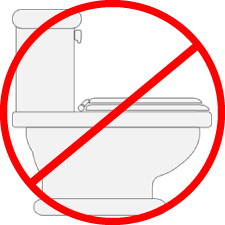|
|
|
|
 |
To monitor entrants during the job and during entry & exit to insure their safety. |
|
|
 |
The attendant may not abandon his post for any reason while personnel are in the space unless relieved by another qualified attendant. |
 |
 |
To monitor atmospheric conditions in the space prior to and during entry.
|
|
 |
To control access to the confined space. |
|
 |
To summon emergency assistance as needed.
A telephone must be located so that the attendant can call for assistance without leaving his post. |
 |
 |
To assess hazards in and around the space, and take any necessary action.
If necessary, the attendant should have the entrants evacuate the confined space. |
 |
 |
The attendant may perform no duties that will interfere with his primary duty to protect the entrants.
|
|
|
 |
The attendant may hand tools and supplies in or out of the tank as long as he is in continuous verbal contact with the entrant. |
 |
|
 |
The attendant may record data provided by an entrant as long as there is continuous verbal contact. |
|
 |
The attendant may monitor the entrants by verbal communication or by monitoring closed circuit television. |
|
 |
The attendant should not enter the space for any reason. |
|